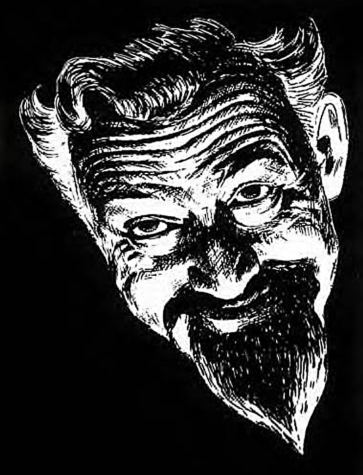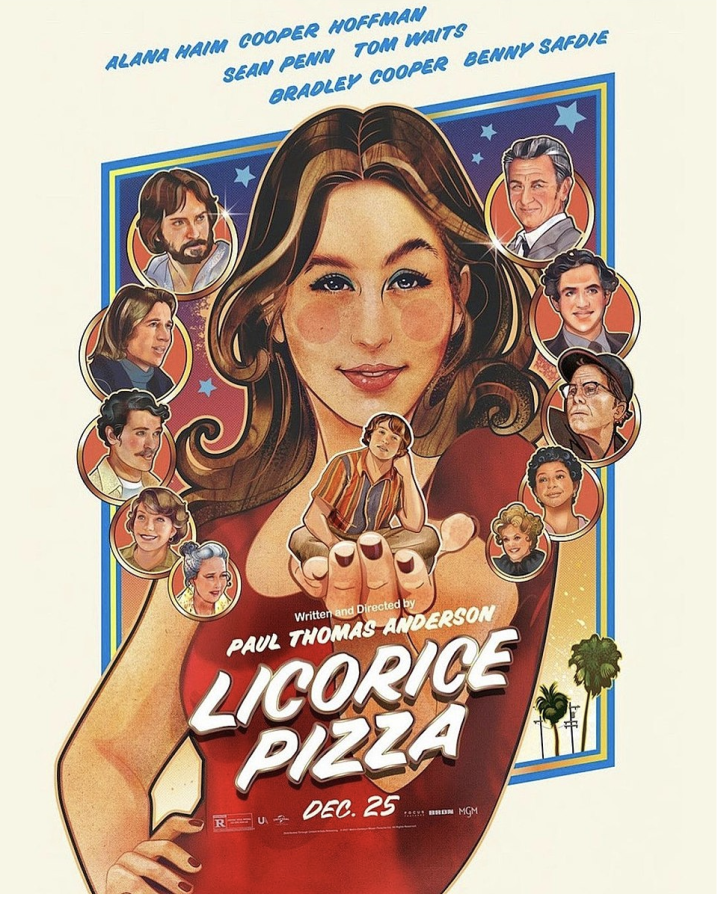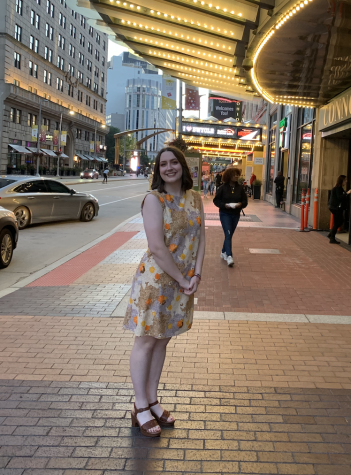Paul Thomas Anderson and his timeless “Licorice Pizza”
Claire Schuppel covers the new film “Licorice Pizza” and her discussion with the film’s writer and director, Paul Thomas Anderson.
Dec 13, 2021
The trajectory of independent cinema changed the day Paul Thomas Anderson stepped into the public eye. His break came in 1997 with “Boogie Nights,” premiering when he was just 27-years-old. From then on, he has created timeless masterpieces that revolutionized film. I had the opportunity to talk with Anderson after seeing his latest 1970s period piece “Licorice Pizza,” which opens in theaters everywhere Dec. 25.
Anderson’s body of work is filled with impressive pieces, with Academy Award Nominated titles, such as “There Will Be Blood,” “Magnolia,” “Punch-Drunk Love,” “Inherent Vice” and the aforementioned “Boogie Nights.” His collaborations are just as iconic as his work, frequently directing Hollywood’s biggest names: Daniel Day-Lewis, the late Philip Seymour Hoffman and Joaquin Phoenix, among many others. While his films are often bleak, dramatic slow burns, “Licorice Pizza” strays away from his typical style and ventures into the timeless story of growth between adolescence and adulthood.
“Licorice Pizza” fits the same mold as a lot of Anderson’s previous works, as it takes place in 1970s Southern California. He said in a Vanity Fair interview that he loves the way the atmosphere looks and feels, so he commonly uses that as his story settings. The film stars fresh-faced actors Alana Haim and Cooper Hoffman, son of Philip Seymour Hoffman. The story follows the two as they flirtatiously navigate their lives — Haim as a young woman struggling through her mid-twenties, and Hoffman as a creative teenager. Add in the elements of impressive cinematography, a well suited soundtrack and established stars in secondary roles and you have an exceptional film.
We discussed the technical aspects of the film in our conversation. Anderson talked about the soundtrack, saying, “the majority of it is figured out beforehand in the writing process. But certainly for the major sequences: the David Bowie song (heard in the trailer) was always planned to be there…this helps determine camera movements and cutting, storytelling, shot selection, all this sort of stuff.” The soundtrack of the movie helps set the atmosphere just as much as the wardrobe, set design and other world-building devices. Names like Bowie, Nina Simone, Paul McCartney and the Doors appear on the film’s soundtrack, along with the original score done by Jonny Greenwood.
Anderson emphasized the importance of character appearances when asked about what specific details were most important to him in recreating the era. “…[N]o one is wearing makeup, and no one is wearing makeup because that would be unrealistic,” Anderson said. “The San Fernando Valley, where the story takes place, is incredibly hot. You would only wear makeup maybe at night, you’d maybe wear makeup to go to a job interview or something like this.”
He also mentioned his continued use of film cameras in a digital age, which helped to enhance the seventies experience. “A technical challenge to me would have been to not shoot on film because I don’t know how to do that,” he says. “So, we have a whole infrastructure in place that was built around how we do it, whether we were shooting a feature film or shooting a music video for Haim or Radiohead….” Decades of learning the nuance of shooting with film certainly worked to his advantage in creating the authentic look of the 1970s.
The lead characters became the topic of conversation when Anderson was asked about navigating their platonic romance as a writer. He highlighted the emotional maturity of Hoffman’s adolescent character, which was paired against Haim’s instability and how she is “stuck firmly in her adolescence and not anxious to grow up, even though she might say she is, she’s doing everything she can to stay young.” Anderson also noted that these differences further emphasized how they could not be together. This dynamic supplemented the comedic element of the movie for him, as the roles of immaturity and maturity do not correlate with their respective ages.

Anderson’s talent can partially be attributed to the influence his father, Ernie Anderson, had on him. His late father’s presence was well known in Cleveland, as his Ghoulardi character was the biggest media sensation on local Channel 8 from 1963 to 1966. His character was an announcer for grade-B horror and science fiction movies, along with being the face of a few different programs on the channel. Anderson commented on his father’s influence in his work, saying, “He had a very strong sense of tempo and how a story would move, and I can remember that making a very strong impression on me. I can’t say it really got into my work until just now because generally the films I make are long and slow.” The pace at which “Licorice Pizza” moved compared to the rest of his work was much faster, as his typical style would not have matched the high energy of the story. He was glad to hear that his father’s influence was still so grand in Cleveland, as he could not verbalize how much his father did for him in life.
Pairing the “Licorice Pizza” viewing experience with the director’s perspective on the process of making the film strengthens how heartfelt the story is. He said in our interview that this film “verified this belief that you really don’t need much more than the desire and a handful of friends and a handful of your family and you can make a great film.” “Licorice Pizza” is a passion project, as it intimately portrays blossoming adulthood. Anderson’s works before have had levels of heart, as he focuses his stories around humanity, but nothing can compare to the tenderness and personal element rendered in “Licorice Pizza.”
So much goes into the film to create this world, from the shot composition and the use of color and light, to the natural chemistry between the lead actors. Every aspect reinforces “Licorice Pizza” as one of Anderson’s best, along with one of the best movies released in 2021.













